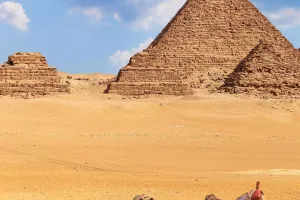New Zealand is known as "the last pure land in the world", with rolling mountains, crystal clear lakes, pristine glaciers, and mysterious fjords. It can be said that everyone who has been to New Zealand has never forgotten it.
Those who have been here wanted to know more about it, and those who have not been there will be curious: what kind of country is New Zealand?
This is a pure world composed of grasslands, mountains, lakes, and sky. As "Lonely Planet" said: "New Zealand is as beautiful as it is straight out of a movie or a magazine. Travel here and be amazed at least once a day."
Being a large outer island away from all continents, New Zealand's creatures took a different evolutionary path. Many creatures in New Zealand are endemic to the local area, not even in neighboring Australia. Once they become extinct, it will be a loss to the whole world.
In the past, extensive management has cost New Zealand a large number of species, including the laughing owl, the stingray, and the long-legged different wren. Later, New Zealanders started a huge effort to protect the local fragile ecological environment.
As early as 1840, New Zealand had the concept of nature reserves, allowing the government to purchase land as a "public reserve" to protect local wildlife. Today, New Zealand has 13 national parks, 8 wetland reserves, more than 30 marine reserves, and 17 island reserves.
Commercial development is not allowed locally, and wild animals and plants are inviolable.
At the legal level, a special environmental court is responsible for hearing cases related to environmental protection, based on the "Resource Management Law" promulgated in 1991, which contains very detailed laws and regulations on natural resource development and natural environment management.
In New Zealand, environmental protection has also become a consensus. Nearly all mining developments are opposed by local residents, who fear it will release harmful wastewater. Public forests also do not allow any development, and only privately-owned forest lands can be subject to limited logging under legal supervision.
The use of pesticides is also almost banned, which is really hard to imagine in a country where agriculture is a pillar industry.
The better natural carrying capacity of the environment and the respectful protection of the environment by the locals have made New Zealand the last piece of pure land on the legendary earth.
Except for the slight smog in major cities such as Auckland, Wellington, and Christchurch, the rest of the country is basically clean and low in pollution. Many people who want a slow-paced and fresh life have traveled to New Zealand, and the local area has never let them down.
This has also become a special advantage for New Zealand to develop green agriculture and animal husbandry.
There are more than 4.2 million dairy cows in New Zealand, which is similar to its population. With a small land area, it has become the eighth largest milk producer in the world, accounting for 2.2% of the world's total.
The quality advantage may be more obvious. Many world dairy giants have chosen to open pastures in New Zealand, allowing them to graze freely on the grasslands of New Zealand, reducing the impact of antibiotic injections on the quality of dairy products caused by gastric ulcers caused by the concentrated use of grains.
For example, the Canterbury Plain on the South Island brings together the most beautiful scenery in New Zealand, known for its beautiful environment and pure water plants.
At the same time, Canterbury is also one of the regions with the richest milk sources in New Zealand, with an annual milk output of more than 8 million tons, and one region accounts for 41.7% of New Zealand's overall milk production.
This enables local factories to have a sufficient supply of 100% local high-quality milk source of New Zealand origin. Moreover, New Zealand is the world's golden milk source belt.
The local dairy cows graze naturally 365 days a year and eat natural pasture without any feed. The protein content of milk is generally higher than that of other places in the world, and after passing through a thousand testing items of strict testing institutions, it can ensure that the local milk source is pure and pollution-free.





